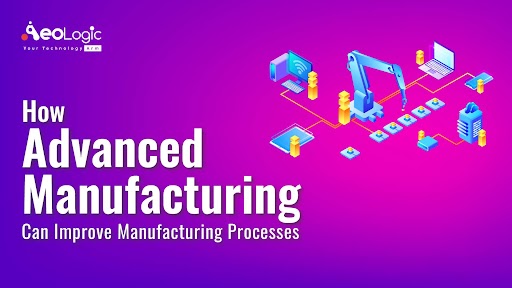The use of innovative technologies and methodologies for improved competitiveness in the manufacturing sectors is referred to as “advanced manufacturing”. Technological advancements have shifted manufacturing organizations into a new competitive environment. Agile manufacturing, virtual manufacturing, supply networks, and concurrent engineering are all heavily influenced by the successful execution and commercialization of advanced manufacturing technologies (AMT). Information and communication technology improves the efficiency with which organizations work and communicate by integrating business units and collaborations.
Manufacturing, packaging, and distribution industries can now be better, faster, and more efficient due to advanced manufacturing techniques. In mechanical, industrial, and electrical engineering, we build and create innovative products and processes that allow these industries to remain ever-evolving. It is noticeable that advanced manufacturing is valuable in all industries, but as of currently, some sectors have experimented with advanced manufacturing more than others such as pharmaceuticals, electrical vehicles, medical devices, plastic industries etc.
Benefits Of Using Advanced Manufacturing Technologies Over Conventional One
- Advanced manufacturing will, eventually, create competition between small and large businesses, because abilities will no longer be determined by the number of workforce or production space, but on the system design that provides the better solution and gives highly accurate products to its customers at a reduced price than conventional approaches.
- Advanced manufacturing includes every aspect of the product life cycle, from construct to edge considerations, and is dependent on information technology to integrate manufacturing and processing activities into a smooth and effective execution.
- Manufacturing activities that rely on information, automation, computation, software, sensing, and networking are indications of advanced manufacturing.
- It helps in efficient production that involves simulation and computer modelling, advanced production technologies, and design and control technologies.
- It helps in optimized production by using intelligent machines and various information & communication technologies.
- Helps ineffective organization by involving state-of-art coordination and efficient utilization of resources and knowledge available.
Tools And Techniques Used in Advanced Manufacturing Processes
1. Enterprise resource planning (ERP): It is a tool for managing information by centralizing all of the organization’s information, allowing the flow of information to be streamlined and all business processes to become connected and end-to-end.
Also read: https://www.aeologic.com/blog/benefits-of-erp-for-manufacturing-industry/
2. Internet of things (IoT): Manufacturing businesses that use the internet of things (IoT) will be able to perform more effectively and efficiently by better planning, controlling, analyzing, integrating, and optimizing processes, as well as increasing the optimum capacity of their edge. IoT helps in improving the quality of products, optimum management of inventory, helps in predictive maintenance, assures safety in operations, and ensures smart packaging in manufacturing processes.
Also read: https://www.aeologic.com/blog/how-to-use-the-internet-of-things-iot-in-manufacturing/
3. 3D printing: 3D printing is a rapid prototyping technique that’s used to build solid parts directly from a CAD model by printing solid structures one layer at a time. 3D printing can be used with many different materials such as thermoplastic polymers.
4. Artificial Intelligence (AI): Artificial intelligence is playing a critical role in transforming various industries around the world, making the lives of business owners, people, and consumers easier. AI insights have the potential to significantly improve manufacturing business capabilities. Benefits of using AI include generative design technology, asset management, forecasting market demand, and managing defects in products.
Also read: https://www.aeologic.com/blog/how-artificial-intelligence-is-transforming-manufacturing/
5. Big data: The applications of big data are gaining popularity because they assist in leveraging the benefits of data, which allows for the prediction of future needs. The facts are accurate because they are created by analyzing patterns and trends. The use of big data in manufacturing has grown at a rapid pace in recent years. Manufacturers are increasingly relying on big data to make business decisions.
Also read: https://www.aeologic.com/blog/the-use-of-big-data-in-manufacturing-industry/
Conclusion
The Indian government has set a target for the manufacturing sector to increase from 16 percent of GDP to 25 percent of GDP by 2025. The National Manufacturing Policy, with its emphasis on “Make in India,” is a powerful economic development strategy in which advanced manufacturing technology plays an important role in the overall development of the country.
To sum up, advanced manufacturing technology is changing the workflow of the manufacturing industries and making it more efficient, effective, and productive with each passing day.
Are you looking to implement advanced manufacturing technologies into your manufacturing business? If yes so please feel free to contact us at support@aeologic.com






